Your smartwatch’s emergency features can save your life through five critical capabilities: instant SOS alerts with dedicated physical buttons that connect to emergency operators via independent 4G LTE, AI-powered fall detection that automatically notifies contacts within 28-52 seconds, real-time health monitoring for heart rate and blood oxygen irregularities, extended battery life lasting weeks to months for reliable operation, and professional 24/7 monitoring services with 15-second response times. These tested features work together to provide thorough emergency protection when you need it most.
Instant Emergency Alert Systems With 4G LTE Connectivity
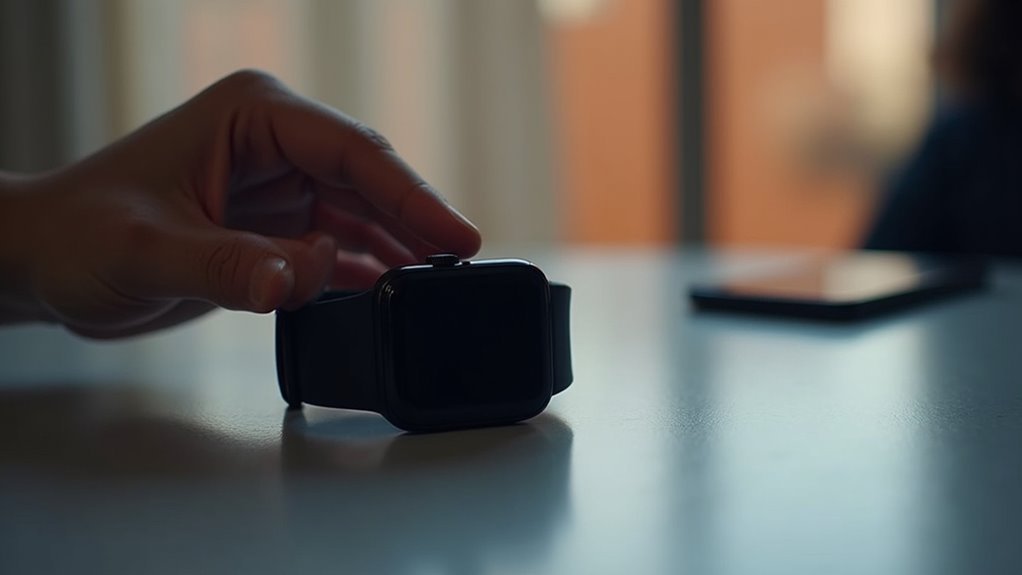
When seconds count during an emergency, smartwatch SOS features deliver life-saving communication through dedicated physical buttons that activate instantly without requiring device access or menu navigation.
You’ll hold the button for about five seconds to prevent accidental triggers, then two-way communication automatically connects you with emergency operators or preset contacts.
A simple five-second button press instantly connects you to emergency help when every moment matters most.
The 4G LTE connectivity guarantees your watch operates independently from your smartphone, maintaining reliable cellular signals even without Wi-Fi connections.
You can communicate directly with emergency dispatchers through real-time audio while your precise GPS location and medical information transmit instantly over LTE networks.
This global coverage expands your safety net beyond localized networks, enabling responders to locate and assist you faster regardless of your geographic location. The system also contacts friends and family as part of the comprehensive emergency response protocol.
AI-Powered Automatic Fall Detection Technology
Although traditional emergency buttons require manual activation, AI-powered automatic fall detection technology transforms your smartwatch into a proactive guardian that monitors your movements continuously and responds instantly when algorithms detect sudden impact patterns or unusual motion sequences.
Your device’s accuracy depends heavily on sensor quality, algorithm sophistication, and proper placement on your wrist. While these systems excel at detecting hard falls, they sometimes struggle with slow or low-impact incidents, potentially generating false alarms that waste emergency resources.
You’ll find that modern AI fall detection offers immediate response capabilities, alerting emergency contacts or healthcare staff without requiring your conscious input. The technology typically provides response times averaging between 28 to 52 seconds once a fall is detected by the monitoring system.
However, you must consider the technology’s limitations—sensor dependence affects reliability, and continuous refinement remains essential as AI advances evolve your smartwatch’s protective capabilities.
Real-Time Health Monitoring for Critical Situations
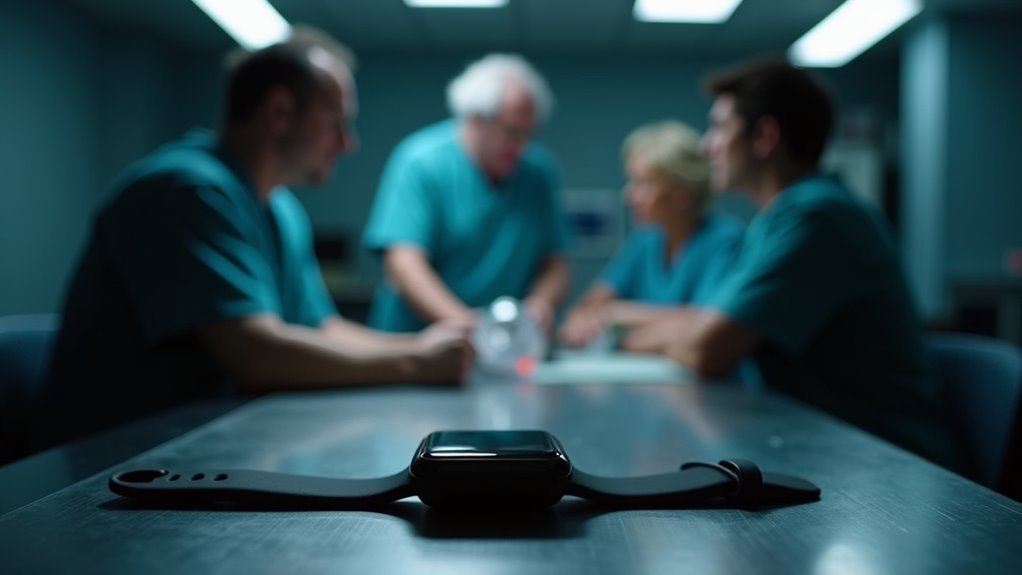
Beyond detecting falls, your smartwatch transforms into an all-encompassing health sentinel that continuously monitors essential signs like heart rate, blood oxygen levels, and irregular rhythms in real-time. When critical situations arise, you’ll receive immediate alerts while healthcare providers get automatic notifications about concerning crucial sign changes.
| Monitoring Feature | Detection Capability | Emergency Response |
|---|---|---|
| Heart Rate Tracking | Irregular rhythms/arrhythmias | Cardiologist alerts |
| Blood Oxygen Levels | Hypoxemia/breathing issues | Emergency service contact |
| Crucial Sign Analysis | Multi-parameter anomalies | Healthcare provider notifications |
| Activity Monitoring | Exercise safety thresholds | Real-time feedback warnings |
| Continuous Streaming | 24/7 health data collection | Personalized care adjustments |
The most advanced systems utilize wireless transmission to send critical health data instantly to backend monitoring centers for comprehensive analysis and emergency response coordination. You’re empowered with personalized insights that help you make informed health decisions while ensuring prompt interventions when irregularities occur.
Extended Battery Life and Standalone Operation
While real-time health monitoring provides essential alerts, your smartwatch’s ability to deliver consistent SOS protection depends entirely on extended battery life and reliable standalone operation.
Garmin fenix and Enduro Solar models lead with weeks to months of battery—the Enduro 3 offers 36 days standard, extending to 90 days with solar charging.
COROS watches like the VERTIX 2S deliver 40 days for daily use, while Apple Watch Ultra 2 and Galaxy Watch 6 Classic provide 46-48 hours maximum.
You’ll need standalone GPS and cellular capability for true emergency independence.
Garmin, COROS, and Apple Ultra 2 support offline maps and emergency notifications without your phone.
Solar models provide indefinite operation under ideal conditions, making them perfect for wilderness adventures where charging isn’t possible. The OnePlus Watch 2 includes VOOC charging technology that fully charges the 500mAh battery in under an hour.
Professional 24/7 Monitoring and Caregiver Integration
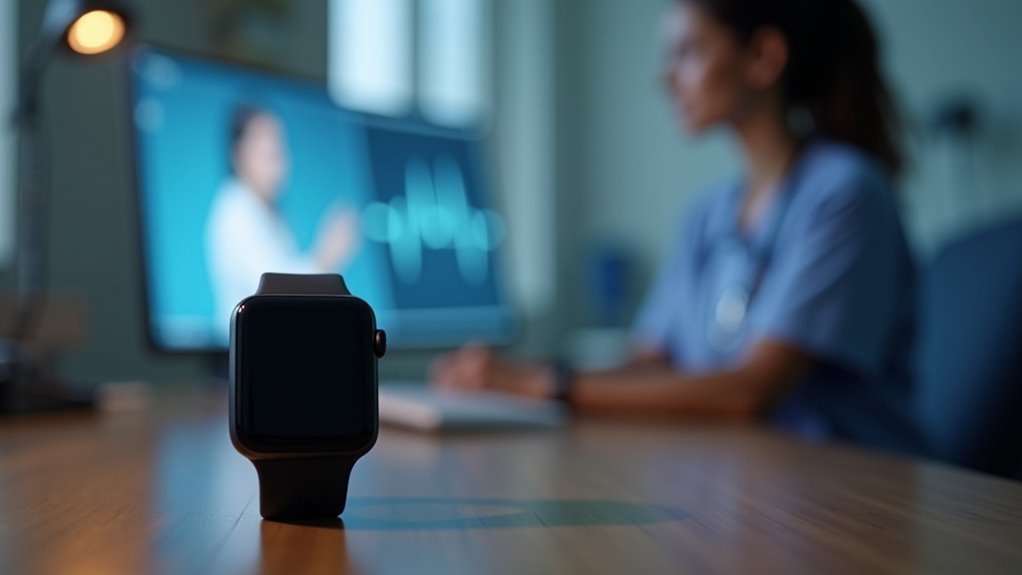
When emergencies strike, you’ll want trained professionals monitoring your smartwatch alerts around the clock, not just automated systems sending texts to family members. SOS smartwatches deliver exactly that with continuous 24/7 monitoring services staffed by emergency response professionals who can assess situations and coordinate appropriate help.
Your caregivers stay connected through real-time location tracking and customizable alerts via dedicated apps. They’ll receive battery notifications guaranteeing your device never goes dark when you need it most.
Machine learning algorithms continuously improve fall detection accuracy, while alert verification systems minimize false alarms. These systems typically achieve response times averaging 15 seconds, ensuring immediate assistance when every moment counts.
The monitoring center can track your location history, manage emergency contacts, and provide real-time updates about your status. This integrated approach guarantees fast response times while maintaining your data privacy through secure monitoring protocols.
Frequently Asked Questions
Can Smartwatch SOS Features Work Underwater or in Extreme Weather Conditions?
You can use smartwatch SOS features underwater through acoustic signals detected by pool receivers, but there’s limited data on extreme weather performance since most testing occurs in controlled indoor environments.
What Happens if the Smartwatch Is Damaged During an Emergency Situation?
If your smartwatch gets damaged during an emergency, you’ll lose touchscreen access, but dedicated SOS buttons, voice commands, and fall detection sensors might still work if they’re undamaged.
Are SOS Smartwatch Emergency Services Available When Traveling Internationally?
You’ll find SOS availability varies by brand when traveling internationally. Apple and Garmin offer the best global coverage, while Samsung depends on local networks. SecuLife, Bay Alarm only work domestically.
How Much Do Monthly Monitoring Subscriptions Typically Cost for Different Service Levels?
You’ll pay $10-$15 monthly for basic carrier smartwatch plans with SOS features, while dedicated medical alert monitoring services cost considerably more at $35-$48 monthly for extensive emergency response coverage.
Can Multiple Family Members Receive Emergency Alerts From One Smartwatch Simultaneously?
You can add multiple family members as emergency contacts on most smartwatches. When you activate SOS, all added contacts receive alerts simultaneously containing your location and status information.
In Summary
You now understand how these five smartwatch SOS features can literally save your life. Whether you’re hiking alone, managing a chronic condition, or caring for an aging parent, you’ve got the technology to respond instantly when emergencies strike. Don’t wait until it’s too late—invest in a smartwatch with these capabilities today. Your safety and peace of mind are worth every penny you’ll spend.

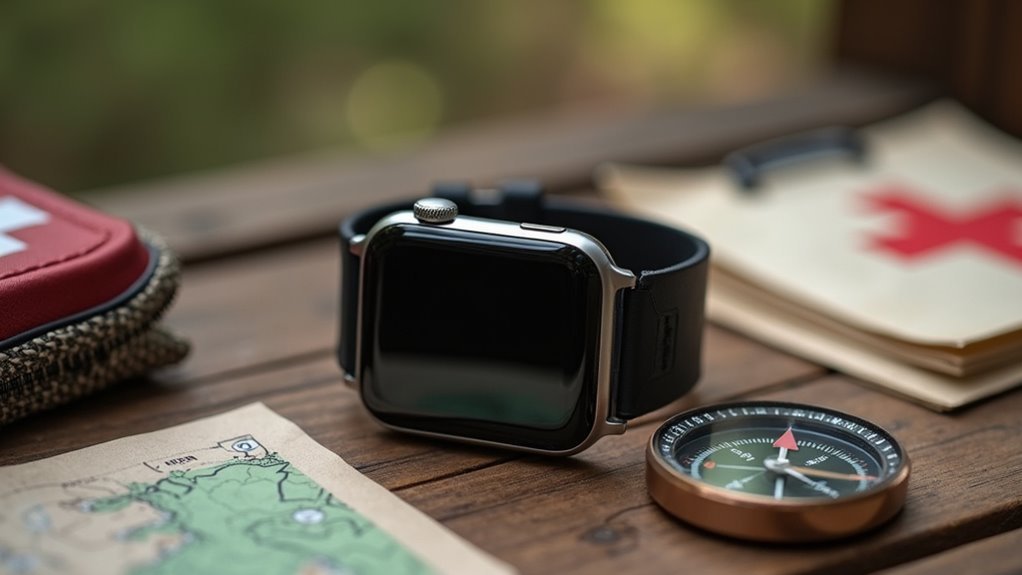

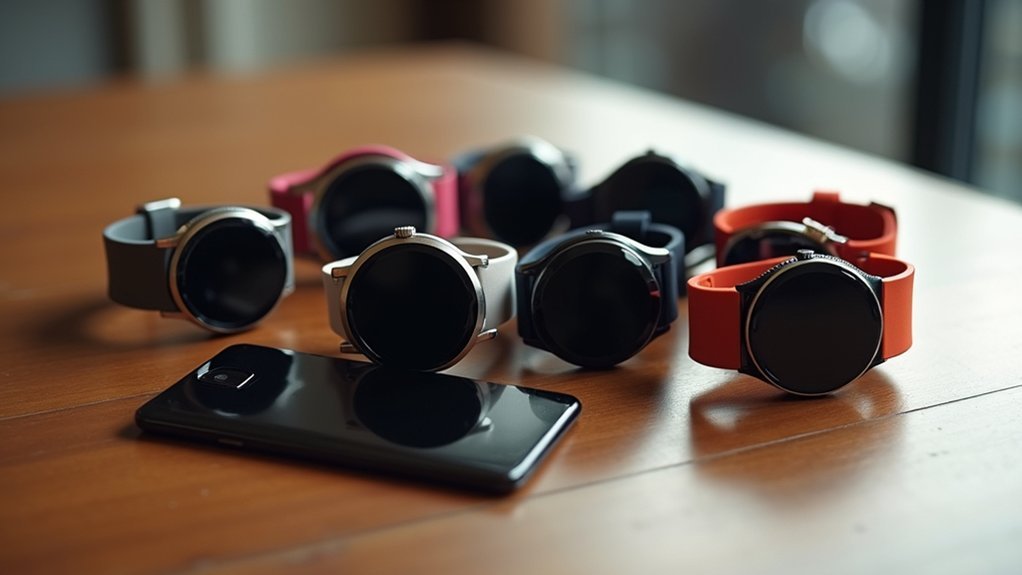
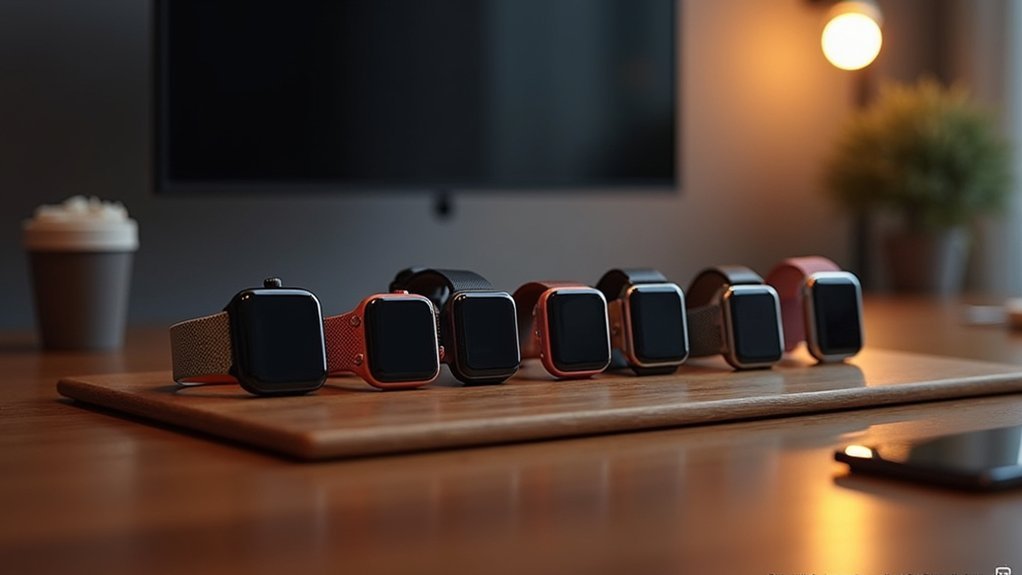
Leave a Reply